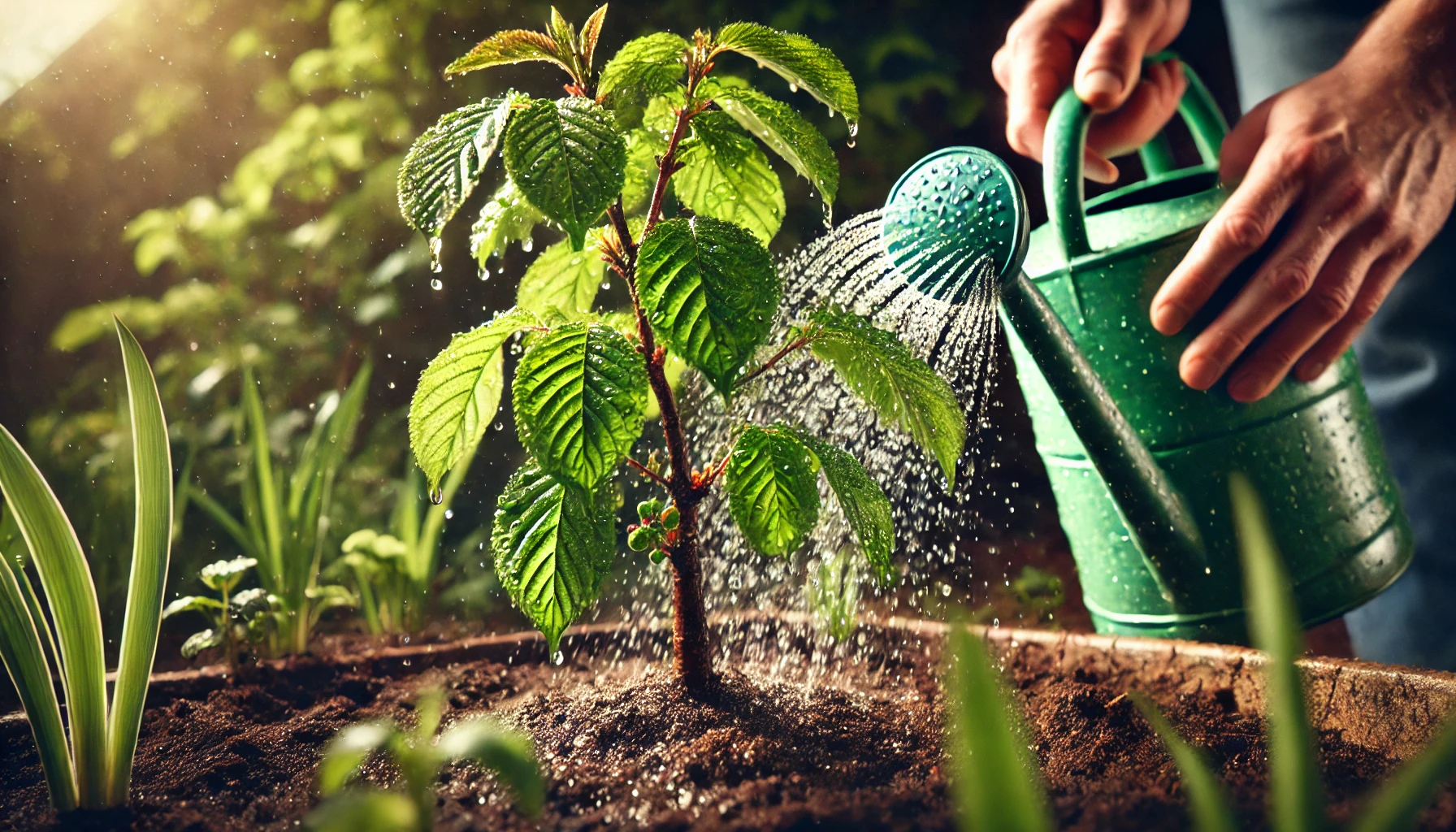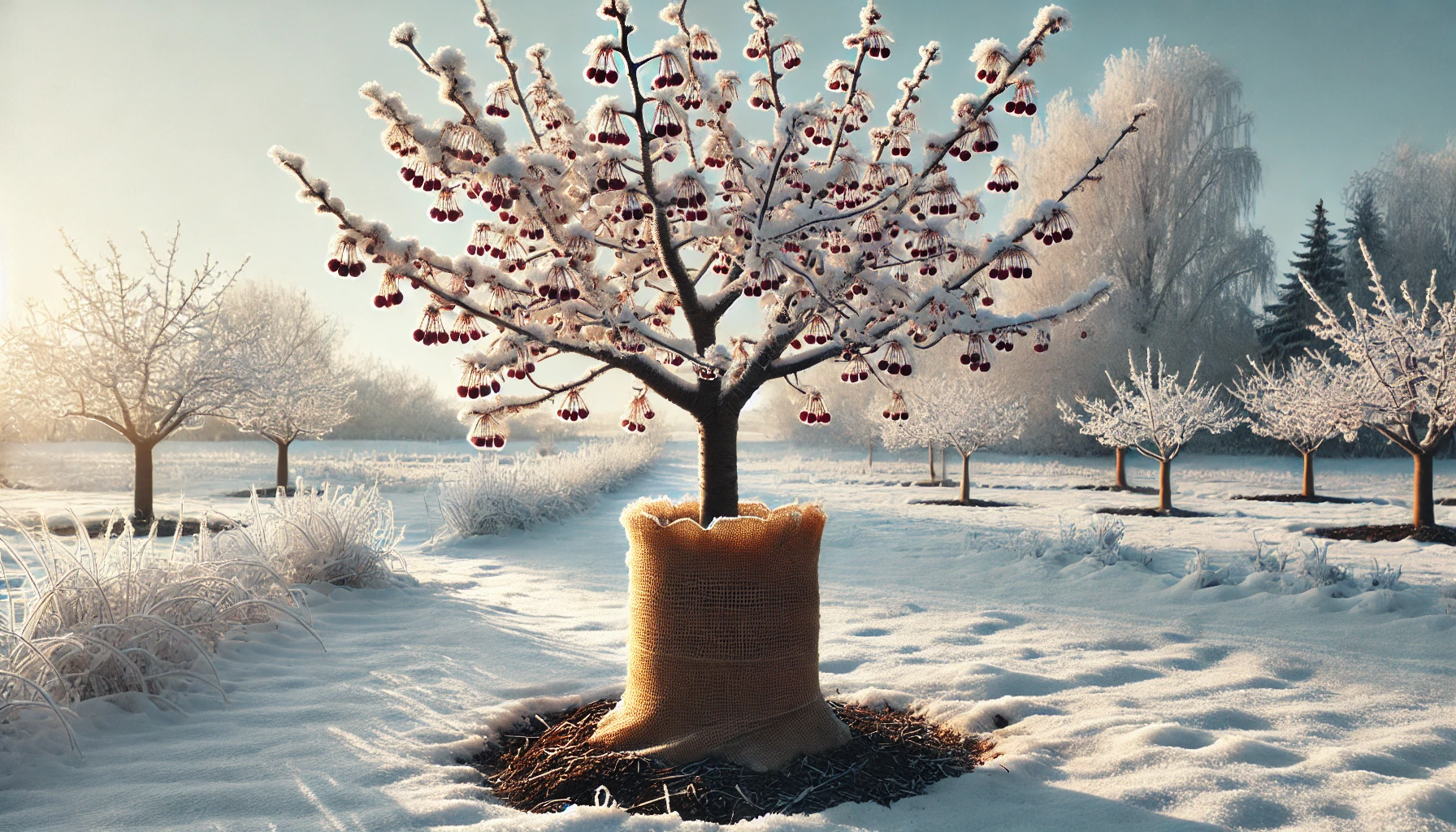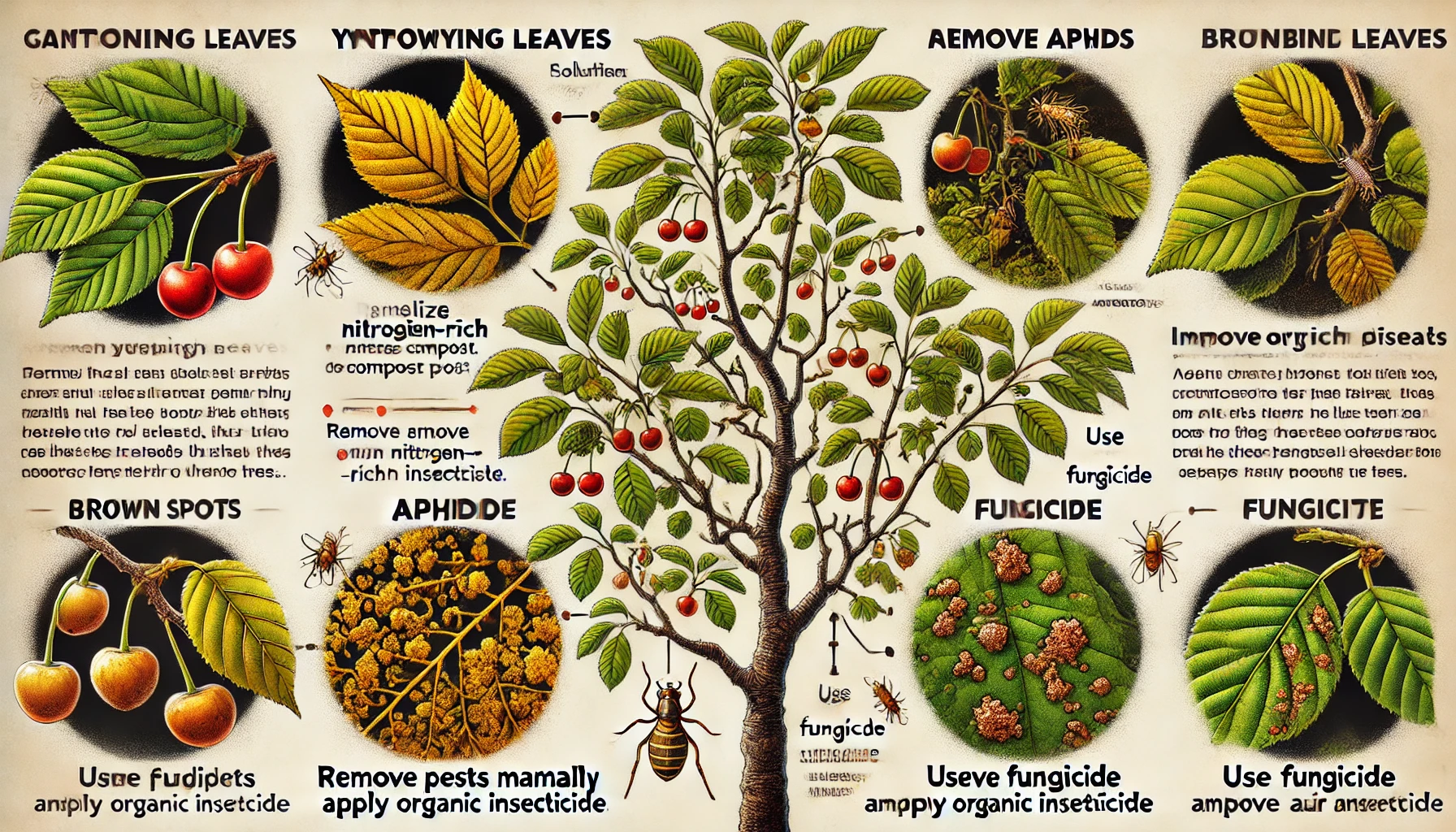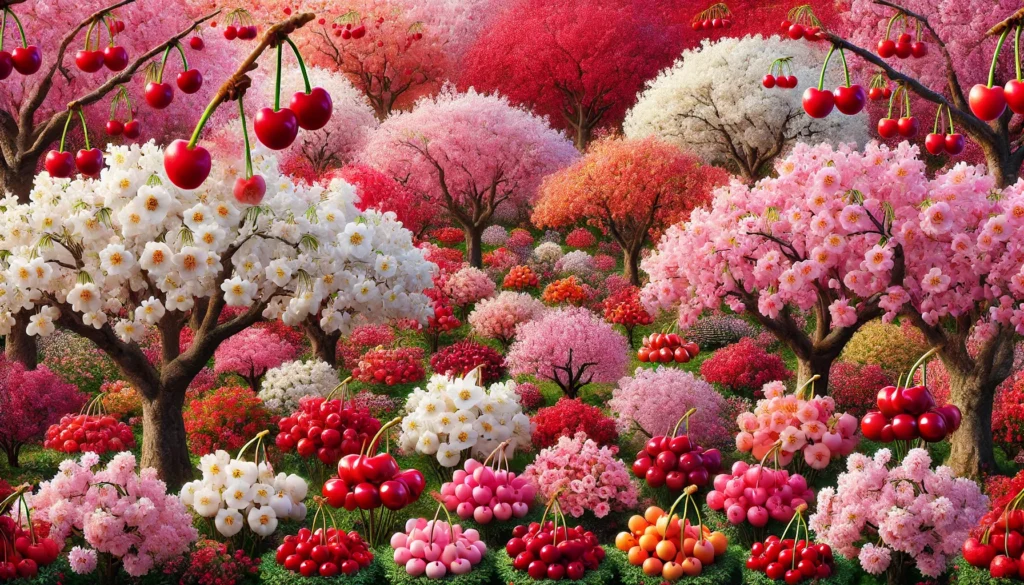
Cherry Tree Care for Beginners: Easy Steps to Grow Healthy Trees and Enjoy a Thriving Garden
Starting your journey with cherry trees can be a rewarding experience, but knowing Cherry Tree Care for Beginners: Easy Steps to Grow Healthy Trees is essential for success. Whether you’re dreaming of vibrant blossoms or juicy fruit, your cherry tree’s health depends on the care it receives from the very beginning. In this guide, we’ll break down simple yet effective steps to help you nurture your tree, overcome common challenges, and set the foundation for a thriving garden. Ready to grow a cherry tree that flourishes year after year? Let’s dive in!
Table of Contents
ToggleChoosing the Right Cherry Tree Variety for Your Garden 
Selecting the perfect cherry tree for your garden is crucial to ensure a healthy and fruitful experience. With numerous cherry tree varieties to choose from, consider these key factors to make an informed decision:
- Climate Suitability
Cherry trees thrive in different climates, so choose a variety that matches your region’s conditions. If you’re in a cooler area, consider tart cherry varieties like Montmorency, which can withstand frost. For warmer regions, sweet cherries such as Bing are ideal. - Tree Size
Some cherry trees grow tall, while others are more compact. If you have a smaller garden, opt for dwarf varieties like Stella or Compact Stella, which remain manageable in size but still produce delicious fruit. Larger trees, like Rainier, need more space to grow. - Fruit Type
Sweet cherries are perfect for fresh eating, while tart cherries are best for baking or making jams. Think about how you plan to use your cherries. If you prefer fresh cherries, Bing or Sweetheart might be perfect. For culinary purposes, Montmorency or Morello are excellent choices. - Pollination Needs
Most cherry trees require cross-pollination to bear fruit, meaning you need at least two compatible varieties. However, self-pollinating varieties like Stella or Lapins can thrive on their own, making them perfect for smaller gardens or those with limited space. - Harvesting Season
Cherry trees have different harvest times, so plan accordingly. Early-season varieties like Early Richmond offer cherries as soon as summer begins, while late-season varieties like Chelan can extend your cherry harvest.
By choosing a cherry tree variety that fits your garden’s size, climate, and needs, you’ll be on your way to growing a thriving, fruitful cherry tree!
Planting Your Cherry Tree: Step-by-Step 

Planting a cherry tree is an exciting project that brings long-term beauty and delicious fruit to your garden. Follow these easy steps to ensure your tree thrives!
1. Choose the Right Spot 
- Sunlight: Cherry trees love the sun! Pick a spot with full sun (at least 6 hours a day).
- Soil: Well-drained soil is key. Sandy or loamy soil works best, so avoid wet, heavy clay areas.
2. Prepare the Hole 
- Size: Dig a hole twice as wide as the root ball and as deep as the tree’s root system.
- Tip: Loosen the soil around the hole to allow roots to spread easily.
3. Plant the Tree 
- Gently remove the tree from its pot. Place it in the hole, ensuring the root collar (where the roots meet the trunk) is level with the surrounding soil.
- Tip: Avoid planting too deep, as it can cause root rot.
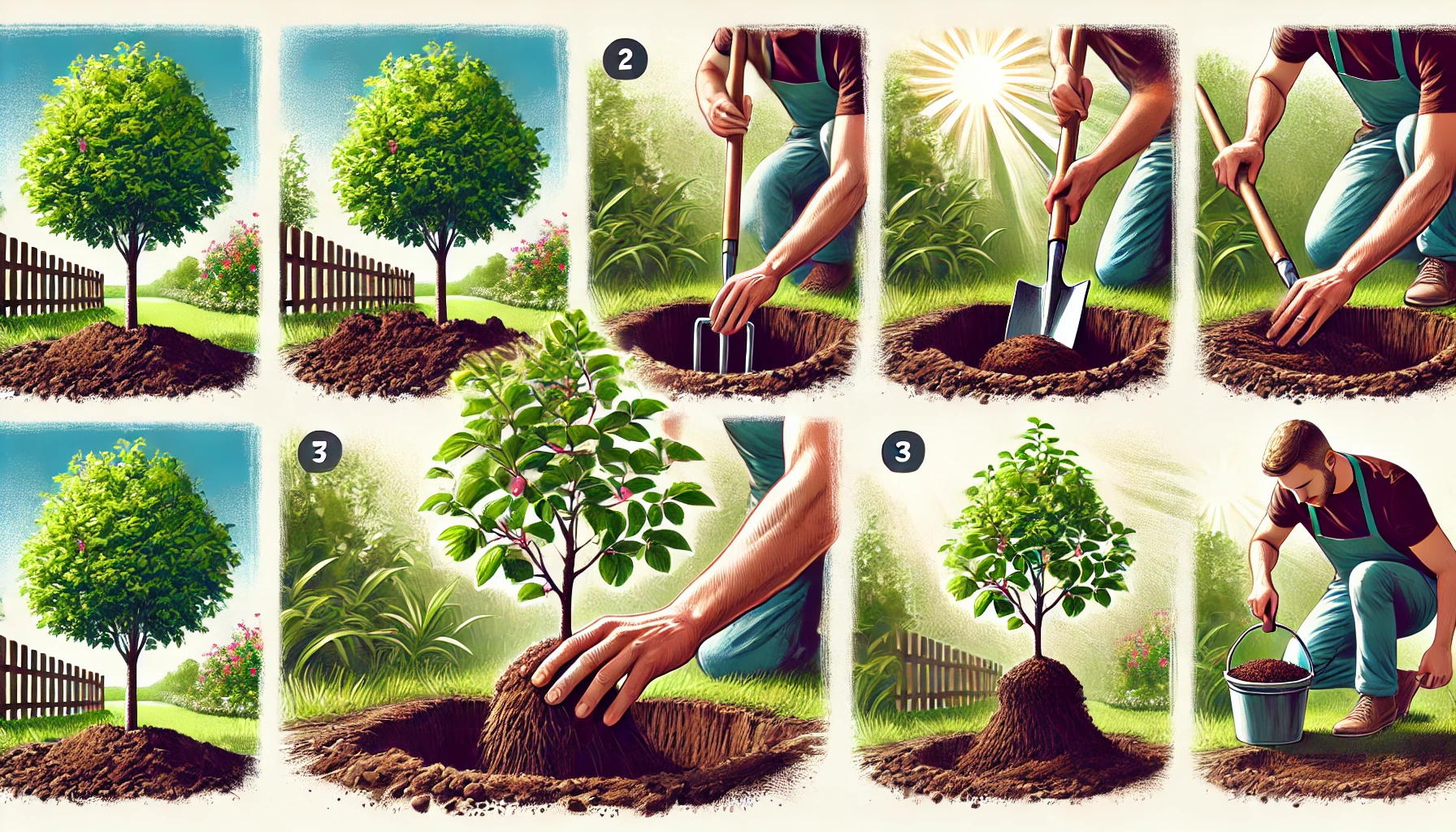
4. Fill and Pack the Soil 
- Backfill the hole with the soil you dug up. As you fill, gently press the soil around the roots to remove air pockets.
- Water well to help settle the soil.
5. Mulch Around the Base 
- Apply a 2-4 inch layer of mulch around the base of the tree, keeping it away from the trunk.
- Benefit: Mulch helps retain moisture and keeps weeds at bay.
6. Water and Care 
- Watering: Keep the soil consistently moist, especially during the first year. Water deeply to encourage strong root growth.
- Fertilize: Apply a balanced fertilizer in early spring to promote healthy growth.
With these simple steps, you’ll have a thriving cherry tree that will reward you with years of fruit and beauty!
Watering and Fertilizing: Essential Tips for Healthy Growth 

Watering and fertilizing are key to maintaining a thriving plant. Follow these tips to keep your plants healthy and flourishing:
1. Watering Your Plants 
- Consistency is Key: Most plants prefer consistent moisture, but avoid overwatering. Water deeply when the soil feels dry to the touch.
- Water at the Right Time: Early mornings or late evenings are the best times to water, as it reduces evaporation and allows roots to absorb moisture.
- Drainage Matters: Ensure your pots or garden beds have proper drainage to prevent water from pooling around the roots, which can cause rot.
2. Fertilizing for Strong Growth 
- Choose the Right Fertilizer: Use a balanced fertilizer (NPK: 10-10-10) for general plant health. For flowering plants, look for fertilizers higher in phosphorus.
- Frequency: Fertilize every 4-6 weeks during the growing season. During winter, when plants are dormant, reduce fertilization to once a month.
- Follow Instructions: Always follow the manufacturer’s guidelines to avoid over-fertilizing, which can harm your plants.
3. Signs of Watering and Fertilizing Needs 
- Too Much Water: Yellowing leaves or soggy soil can signal overwatering.
- Underwatering: Wilted, dry leaves are signs your plant needs a drink.
- Fertilizer Deficiency: Pale leaves or slow growth may indicate a need for more nutrients.
By paying attention to watering and fertilizing, you ensure that your plants grow strong and vibrant!
Pruning Cherry Trees: Promote Healthy Growth 

Pruning your cherry tree is essential for maintaining its health, improving fruit production, and preventing disease. Here’s how to prune it effectively:
- Timing is Key
Prune in late winter or early spring before the tree starts growing again. This helps avoid disease and ensures the tree heals quickly. Avoid pruning in late summer, as this can damage the tree. - Choose the Right Tools
Use sharp, clean pruning shears or a pruning saw for larger branches. Clean your tools between cuts to prevent the spread of diseases. - Remove Dead or Diseased Wood
Cut away any dead, diseased, or broken branches. These not only look unsightly but can also be a breeding ground for pests and diseases. - Thin Out Crowded Branches
To allow light and air to reach all parts of the tree, remove branches that cross or rub against each other. This helps promote better fruit production. - Shape the Tree
Aim to maintain a central leader (a dominant vertical branch) with a strong structure. Remove competing branches that could disrupt the shape of the tree.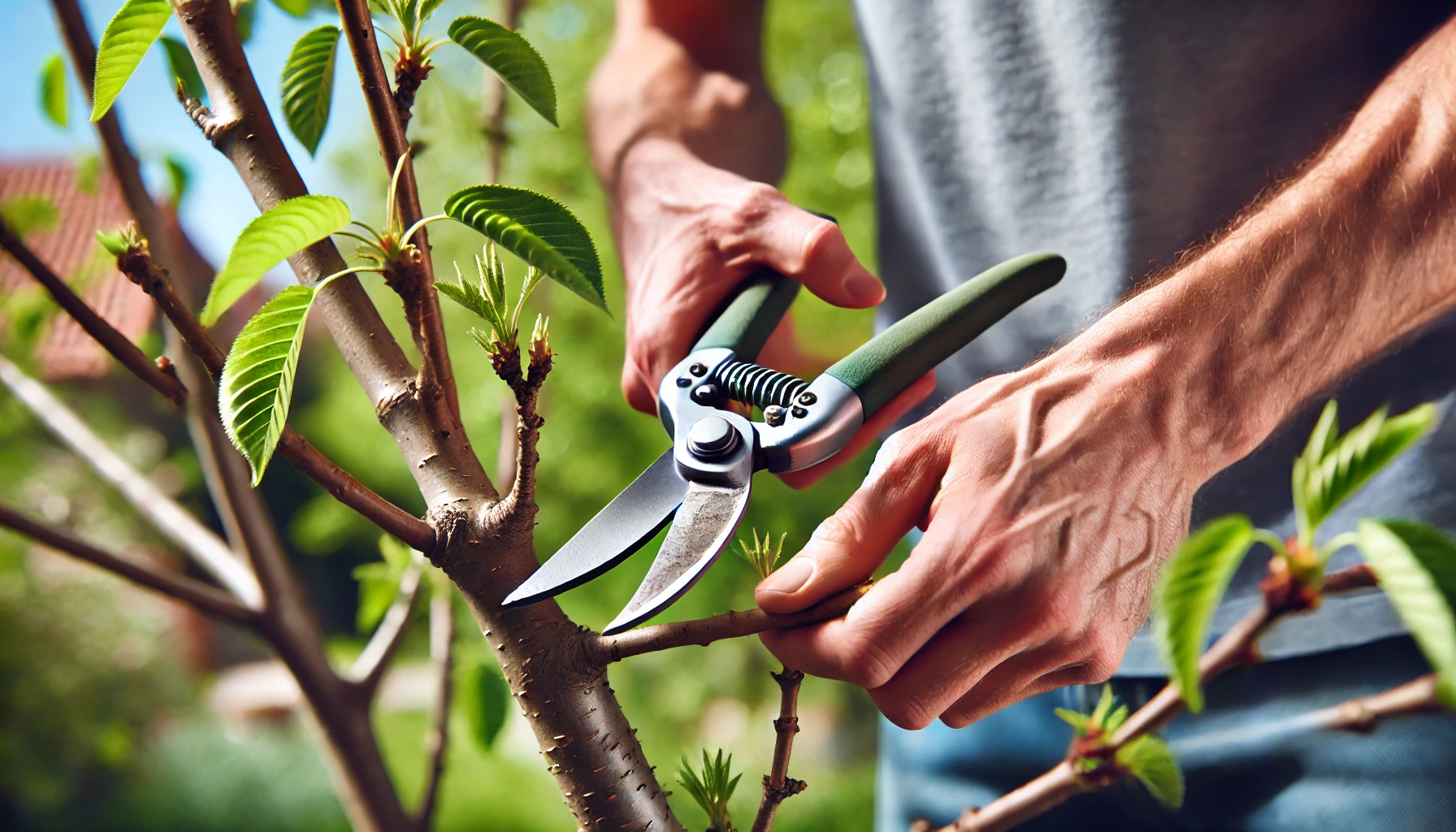
- Cut at the Right Angle
Make cuts at a 45-degree angle, slightly above a bud or lateral branch. This promotes healthy growth and reduces the risk of water buildup.
By following these steps, you’ll encourage a healthy, thriving cherry tree that produces abundant fruit year after year!
Protecting Cherry Trees from Pests and Diseases 

Cherry trees are beautiful additions to your garden, but they can fall victim to pests and diseases that hinder their growth. Here are some essential tips to keep them healthy and pest-free:
- Regular Inspection
Inspect your cherry tree frequently, especially in spring and summer. Look for signs of pests like aphids, caterpillars, and scale insects. Early detection is key! - Apply Organic Pesticides
Consider using organic solutions like neem oil or insecticidal soap. These products target pests without harming beneficial insects. Always follow instructions carefully!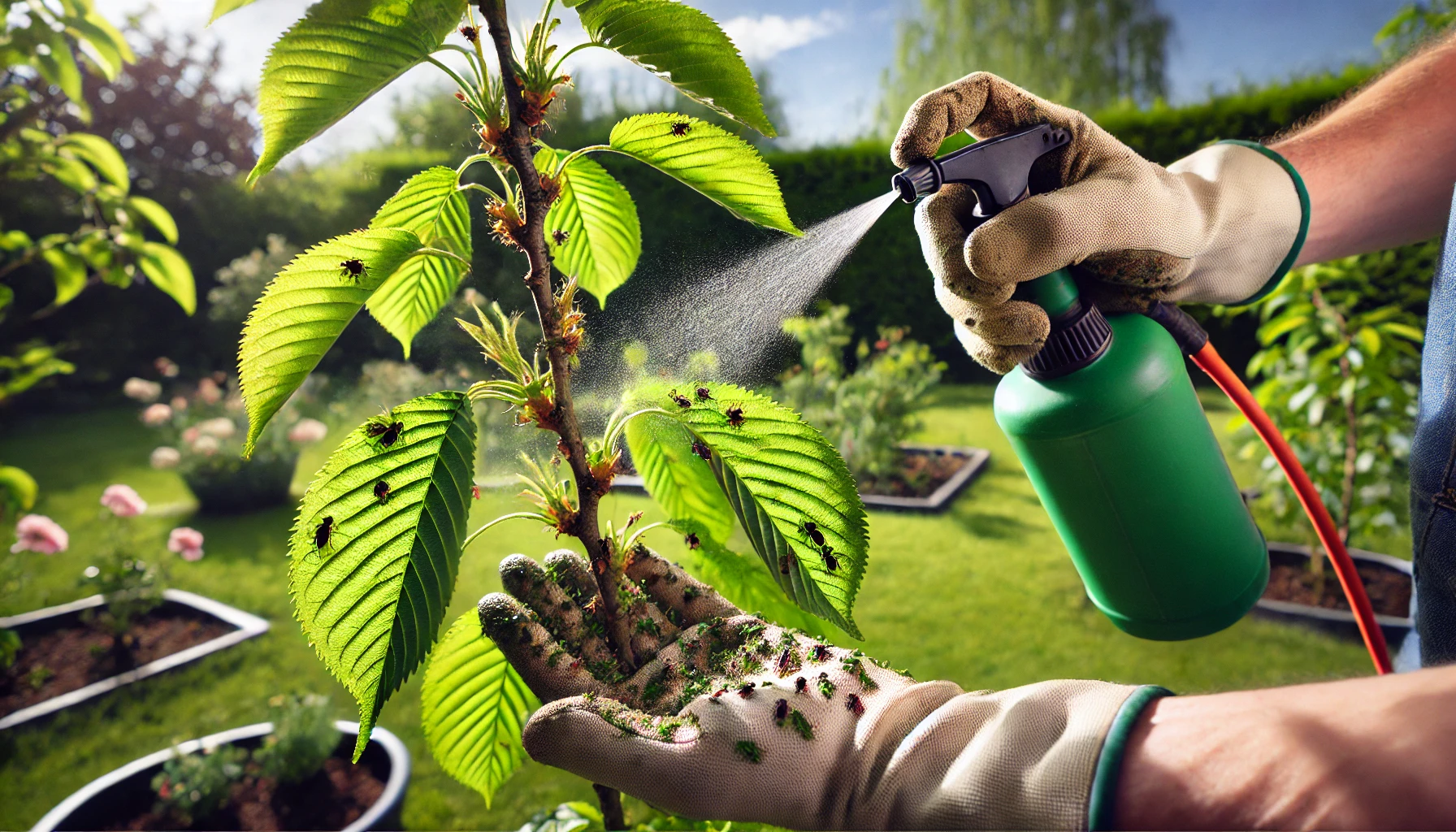
- Keep the Area Clean
Remove fallen leaves and fruit from around the tree. This prevents pests like beetles and fungal spores from finding a cozy home. Hygiene is vital for pest control! - Prune Regularly
Pruning improves air circulation and removes damaged branches that could become infection hotspots. It also helps the tree grow stronger, making it more resistant to pests and diseases. - Treat Fungal Diseases
Cherry trees are susceptible to fungal diseases like brown rot and powdery mildew. If you spot any fungal growth, apply a fungicide promptly. Copper-based fungicides work well for most cases. - Protect with Netting
Birds love cherry fruits but can also damage your tree. Use bird netting to protect your fruit, especially when it’s ripe. This also prevents other pests from nibbling on your harvest! - Boost Soil Health
Healthy soil strengthens your tree’s natural defenses. Add organic compost to enrich the soil with nutrients and encourage robust growth.
By following these simple tips, you can protect your cherry tree from common pests and diseases, ensuring it stays healthy and produces beautiful fruit year after year!
Dealing with Cherry Tree Winter Care 

When it comes to protecting your cherry tree during the colder months, a little preparation can go a long way! Here’s how to care for your cherry tree in winter:
1. Mulch the Base 
Adding a layer of mulch around the base of the tree helps protect the roots from freezing temperatures. Aim for 2-4 inches of organic mulch, like straw or wood chips. This keeps the soil warm and prevents frost from reaching the roots.
2. Water Properly 
Even in winter, your cherry tree needs hydration. Water the tree thoroughly before the first frost to ensure the roots are well-moisturized. However, avoid overwatering, as the cold can cause water to freeze, damaging the roots.
3. Wrap the Trunk 
Cherry trees are susceptible to sunscald during winter. To prevent this, consider wrapping the trunk with a tree guard or burlap. This shields the bark from extreme temperature swings and protects it from potential damage.
4. Prune Lightly 
If necessary, prune dead or diseased branches before winter sets in. Avoid heavy pruning, as this can make the tree more vulnerable to cold stress.
5. Protect from Snow and Ice 
Heavy snow or ice buildup can cause branches to snap. Gently brush off excess snow or ice to reduce the weight on your tree’s branches. Be careful not to damage the limbs in the process!
6. Provide Wind Protection 
Strong winds can dry out your tree. Consider placing a windbreak, such as a fence or screen, on the windward side of the tree. This can help reduce the chilling effect of harsh winter winds.
By following these simple steps, you can help your cherry tree survive the cold and thrive once the warmer months arrive!
How to Harvest Your Cherry Tree’s Fruit 

Harvesting cherries is a fun and rewarding experience! Follow these simple steps to enjoy the best of your tree’s fruit:
- Timing is Key
: Wait until the cherries are fully ripe. They should be a deep, vibrant color (depending on the variety). If you taste one and it’s sweet, it’s time to pick!
- Check the Firmness
: Ripe cherries will feel firm to the touch, but not too hard. Give them a gentle squeeze – they should yield slightly, but still hold their shape.
- Pick with Care
: Use a gentle twisting motion to remove cherries from the stem. Avoid pulling hard, as this can damage the tree or the fruit.
- Use Pruning Shears
: For higher branches, pruning shears or a fruit picker are your best tools. This prevents the risk of damaging branches.
- Harvest in the Morning
: Morning is the best time to pick cherries, as they tend to be cooler and more hydrated, making them last longer.
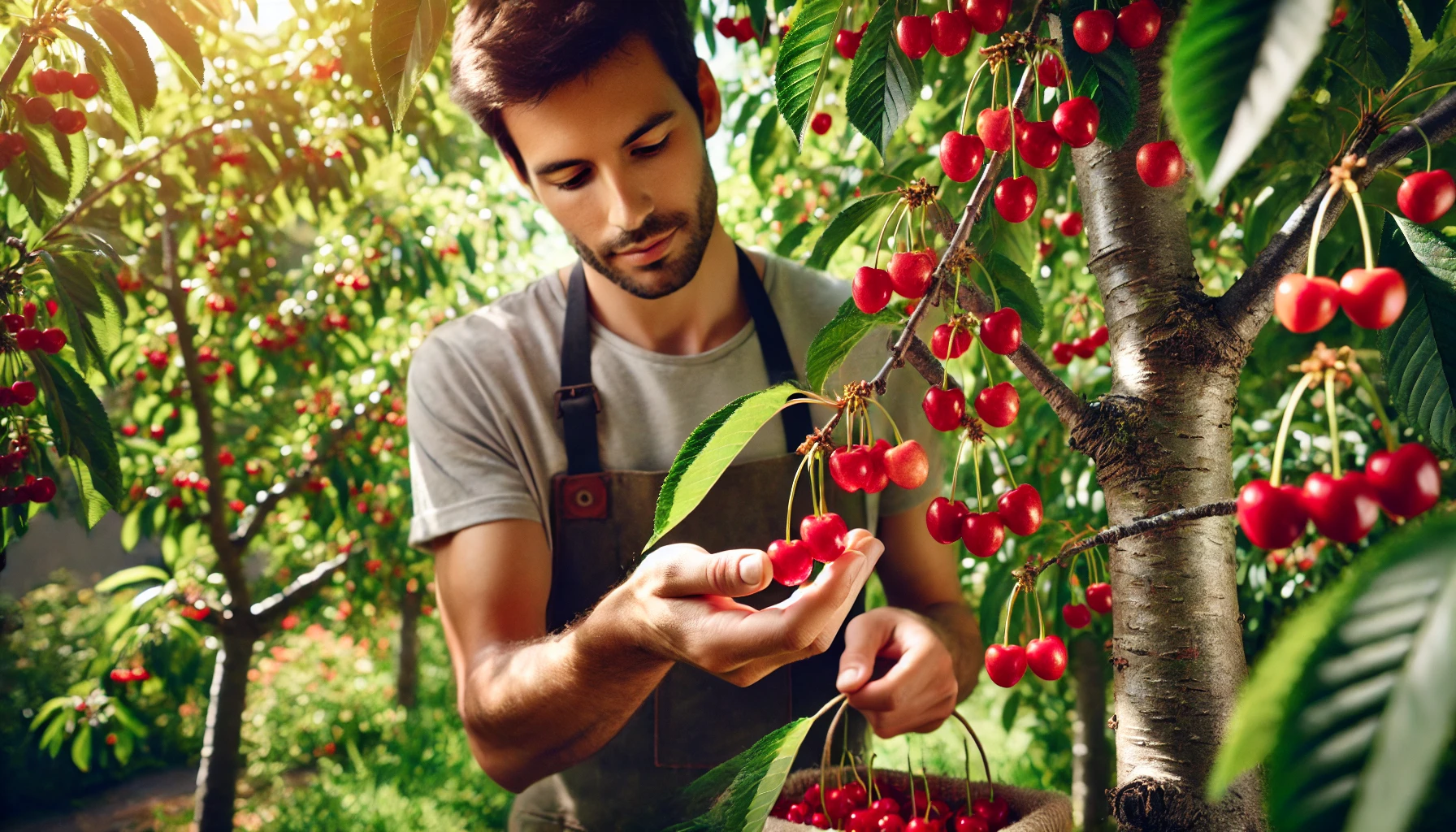
- Handle Gently
: Cherries are delicate, so handle them carefully to avoid bruising. Place them in shallow containers to prevent squashing.
- Enjoy Your Bounty
: Once harvested, cherries are best eaten fresh or can be preserved by freezing, canning, or making delicious jams!
By following these steps, you’ll be enjoying your cherries in no time!
Troubleshooting Common Cherry Tree Problems 
Cherry trees can bring joy with their stunning blossoms and delicious fruit. However, like any plant, they can encounter issues that need your attention. Here’s a quick guide to help you troubleshoot common cherry tree problems.
1. Yellowing Leaves 
If your cherry tree’s leaves are turning yellow, it could be a sign of nutrient deficiencies (like nitrogen), overwatering, or poor drainage. To fix this:
- Solution: Ensure your tree is getting enough nutrients by applying a balanced fertilizer. Check drainage and avoid overwatering.
2. Wilting or Drooping Leaves 
Wilting could be a sign of root rot caused by excessive water. Root rot happens when waterlogged soil deprives the roots of oxygen.
- Solution: Make sure the soil drains well, and reduce watering frequency. If the tree is heavily affected, you might need to prune damaged roots.
3. Cherry Tree Leaves Turning Brown or Black 
Brown or black spots on the leaves can be caused by fungal diseases like Coccomyces or Bacterial Canker. These can affect the tree’s health over time.
- Solution: Prune affected leaves and branches. Use a fungicide to control the spread, and improve air circulation around the tree.
4. Pests: Aphids, Scale, and Japanese Beetles 
Insects such as aphids and Japanese beetles can damage your cherry tree by sucking sap and causing deformities.
- Solution: Treat with insecticidal soap or neem oil. For Japanese beetles, you can hand-pick them off or use traps.
5. Tree Not Producing Fruit 
If your cherry tree is healthy but isn’t producing fruit, it could be due to poor pollination, age, or an unsuitable climate.
- Solution: Ensure you have compatible pollinators nearby, especially if you’re growing a sweet cherry variety. Also, check that your tree is mature enough to bear fruit (usually 4–7 years).
6. Canker Disease 
Canker causes sunken, discolored areas on branches and can eventually kill the tree. This fungal disease can spread rapidly if left untreated.
- Solution: Prune infected branches and apply a wound treatment to prevent further spread. Improve tree health with proper watering and fertilization.
By recognizing these issues early, you can keep your cherry tree healthy and thriving. Always address any signs of trouble promptly to prevent long-term damage.
Final Tips

Caring for your cherry tree as a beginner may seem like a lot of work, but with the right knowledge and approach, it can be incredibly rewarding. By following the easy steps outlined in this guide—from choosing the right variety and planting at the right time, to providing proper care and protection from pests—you’ll set your cherry tree on the path to strong, healthy growth.
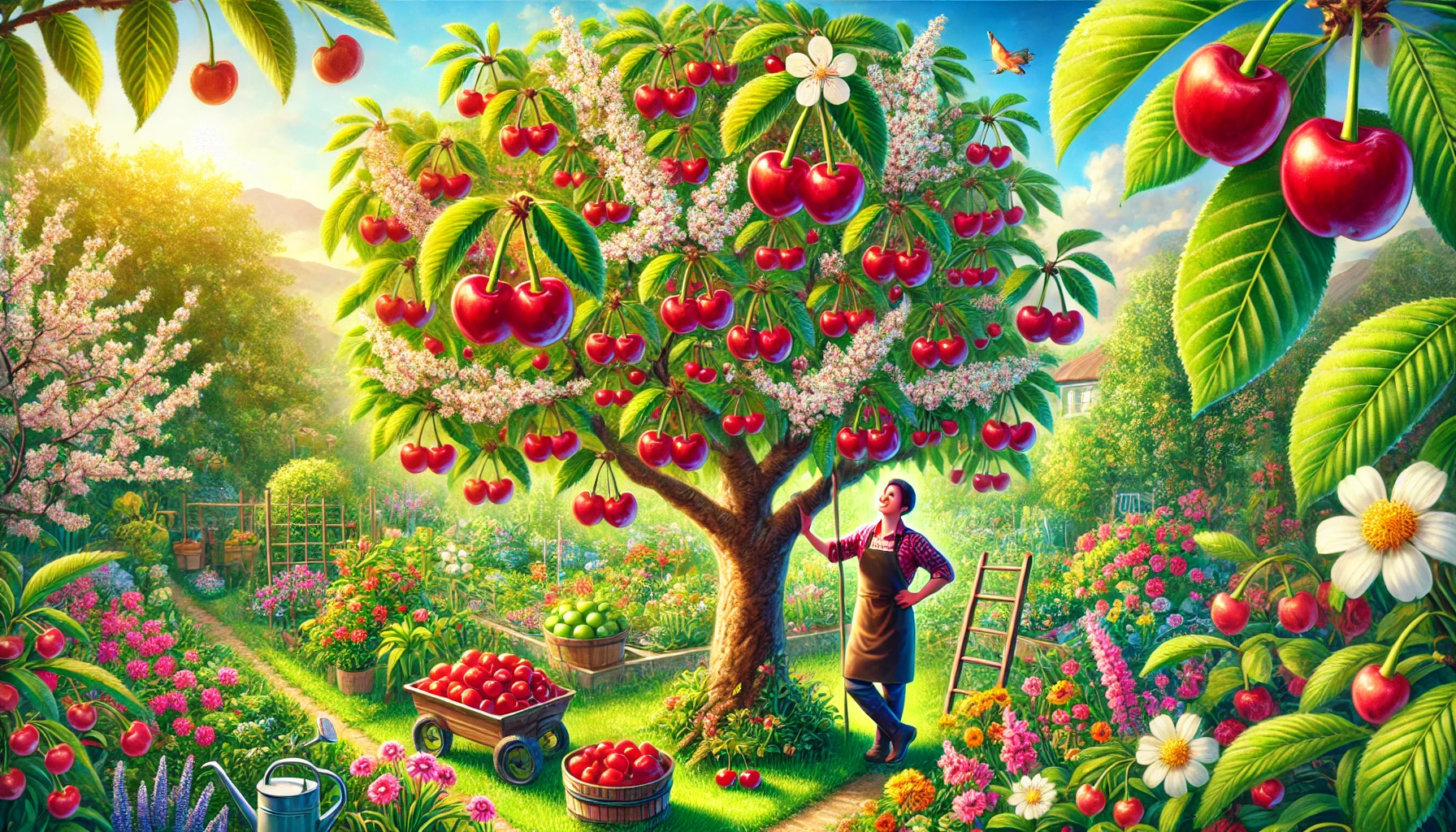
Remember, consistency is key. Regular watering, timely pruning, and monitoring for pests and diseases will ensure your tree thrives and produces beautiful, delicious fruit. As you gain experience, you’ll develop a deeper connection with your cherry tree and gain the satisfaction of watching it grow and bear fruit season after season.
So, whether you’re planting your first cherry tree or looking to improve care for an existing one, these essential tips will help you grow a healthy tree and enjoy a thriving garden for years to come! Happy gardening!
Frequently Asked Questions(FAQ)
What is the best time to plant a cherry tree?
The best time to plant a cherry tree is in early spring or fall. These seasons provide cooler temperatures and ample moisture, which allow the tree’s roots to establish before the heat of summer or the chill of winter.
How often should I water my cherry tree?
Cherry trees need consistent watering, especially during the first few years. Water deeply once a week, ensuring the soil around the tree is moist but not waterlogged. During dry spells, increase watering to keep the soil evenly moist.
How much sunlight does a cherry tree need?
Cherry trees thrive in full sunlight. Ideally, they should receive at least 6-8 hours of direct sunlight each day for optimal growth and fruit production.
How do I protect my cherry tree from pests?
Common cherry tree pests include aphids, cherry fruit flies, and caterpillars. Regularly inspect your tree for signs of infestation. You can use organic pesticides, such as neem oil, or introduce beneficial insects like ladybugs to control pest populations.
When should I prune my cherry tree?
Prune your cherry tree in late winter or early spring before new growth begins. This helps shape the tree and remove any dead or diseased branches, promoting healthy growth and better fruit production.
How can I tell if my cherry tree is healthy?
A healthy cherry tree will have vibrant leaves, a strong trunk, and an even canopy. Keep an eye out for signs of stress, such as yellowing leaves, wilting, or poor fruit production. Early detection of issues can help prevent serious problems.
Do I need to fertilize my cherry tree?
Yes, cherry trees benefit from fertilization, especially in the early years. Use a balanced, slow-release fertilizer in spring to encourage strong growth. Avoid over-fertilizing, as this can lead to excessive leaf growth at the expense of fruit production.
How do I improve fruit production in my cherry tree?
To encourage a bountiful harvest, ensure your tree is planted in a sunny location, watered regularly, and pruned properly. You may also want to thin out some branches to allow more light and air circulation to the tree’s interior.



